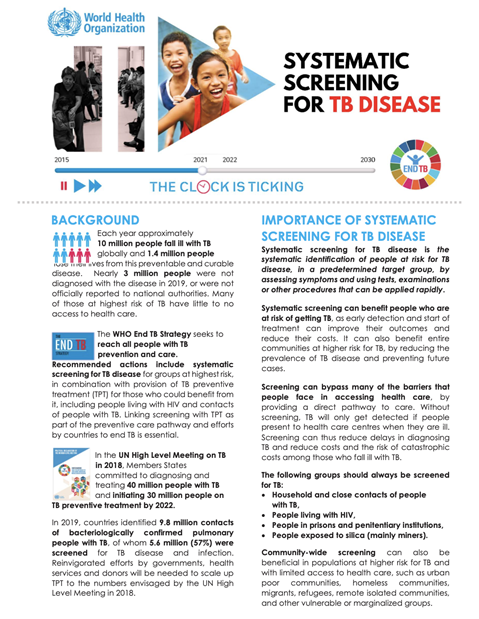Systematic screening for TB disease

Overview
Each year approximately 10 million people fall ill with TB globally and 1.4 million people lose their lives from this preventable and curable disease. Nearly 3 million people were not diagnosed with the disease in 2019, or were not officially reported to national authorities. Many of those at highest risk of TB have little to no access to health care.
Systematic screening for TB disease is the systematic identification of people at risk for TB disease, in a predetermined target group, by assessing symptoms and using tests, examinations or other procedures that can be applied rapidly.
Systematic screening can benefit people who are at risk of getting TB, as early detection and start of treatment can improve their outcomes and reduce their costs. It can also benefit entire communities at higher risk for TB, by reducing the prevalence of TB disease and preventing future cases.
Screening can bypass many of the barriers that people face in accessing health care, by providing a direct pathway to care. Without screening, TB will only get detected if people present to health care centres when they are ill. Screening can thus reduce delays in diagnosing TB and reduce costs and the risk of catastrophic costs among those who fall ill with TB.
